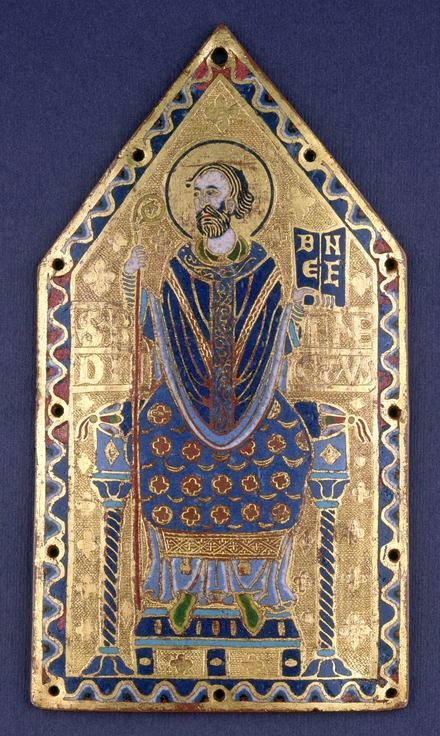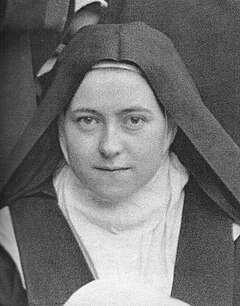
For those who say Lauds (or are interested in learning to say it), I'm currently posting a series over at Psallam Domino on that hour, including the spiritual and theological context of the hour, as well as notes on the variable psalms (and links to previous more detailed notes on the fixed psalms of the hour).
For those just wanting the quick skinny on the hour, here are a few key summaries to help you.
1. The structure of Lauds.
The table below summarises the structure of Lauds - note that there are in effect three versions of it: Lauds on Sundays; Lauds for major feasts (festal); and Lauds on normal weekdays. The table sets out what changes each day and what doesn't.
|
ELEMENT OF LAUDS
|
SUNDAY FEASTS WEEKDAYS
|
||
|
Opening
prayers
|
Fixed
|
||
|
Psalm
66
|
Fixed
|
||
|
Antiphon:
|
Variable
(normally alleluia)
|
||
|
Psalm
50+ Gloria
|
Fixed
|
Psalm
92+variable
antiphon
|
Fixed +variable
antiphon
|
|
Psalm+Gloria
|
Psalm
117
|
Psalm
99+variable
antiphon
|
Of
the day +variable antiphon
|
|
Psalm+Gloria
|
Psalm
62
|
Psalm
62+variable
antiphon
|
Of
the day +variable antiphon
|
|
Antiphon
|
Variable
|
||
|
Antiphon
for the canticle
|
Variable
|
Variable
|
Variable
|
|
OT
Canticle
|
Benedicite
Domino (no Gloria)
|
Festal
canticle of the day of the week with Gloria
|
Ferial
or festal canticle of the day of the week with Gloria
|
|
Antiphon
|
Variable
|
||
|
Ps
148+149+150+Gloria
|
Fixed
|
||
|
Antiphon
|
Variable
|
||
|
Chapter
|
Variable
|
||
|
Responsory
|
Variable
|
||
|
Hymn
|
Variable
– summer winter and seasons
|
Of
the feast
|
Of
the day of the week or season
|
|
versicle
|
Variable
|
||
|
Antiphon
for the Benedictus
|
Variable
|
||
|
Benedictus
|
Fixed
|
||
|
Antiphon
|
Variable
|
||
|
Closing
prayers
|
Fixed
|
||
|
- Collect
|
Of
the Sunday
|
Of
the feast
|
Of
the Sunday or day
|
|
- Commemoration (if
applicable)
|
Of
the feast
|
Of
the feast or day (ie Lent or Advent days)
|
Of
the feast
|
2. Page numbers in the Diurnal
The chants for Lauds can be found in the Antiphonale Monasticum (which can be downloaded from the CCWatershed or purchased through monastic bookshops, including online via Le Barroux); alternatively learn them by ear by listening to the monks of Norcia..
PART OF LAUDS PAGE
Opening prayers – Deus…
|
MD 1
|
Psalm 66 – Deus miseratur…
|
MD 38, 58
|
Antiphons
|
of day of the week or feast/season
|
Antiphon(s), Psalm 50; 2 variable psalms; OT canticle; Laudate psalms Ps 148-150
|
Sunday, MD 39
Festal (for feasts), MD 44
Monday - MD 59
Tuesday - start MD 76
Wednesday – MD 89
Thursday – MD 102
Friday - MD 118
Saturday - MD 133
|
Chapter
|
See in psalter as above or for season/feast
|
Short Responsory
|
See in psalter as above or for season/feast
|
Hymn
|
Of the day of the week (pg nos above) or feast/season
|
Versicle
|
See in psalter as above or for season/feast
|
Antiphon for the Benedictus
|
Of the day of the week/feast/season
[on Sundays, of the week of the liturgical year]
|
Benedictus
|
MD 56, 73
|
Antiphon for the Benedictus
|
M-S of the day of the week; Sun of the week in the calendar
|
Closing prayers
|
MD 57
|
- Collect
|
Of the week of the liturgical year or day/feast
|
- Commemoration of the saint or day
|
Canticle antiphon, versicle and collect said immediately after the collect of the day
|
3. Key points to remember about Lauds
1. The key texts for each day of the week (starting with Sunday) can be found in the Diurnal after Prime (but the hour is said before it) in the psalter section.
2. Lauds is said in the early morning, ideally at first light.
3. Only two (three on feasts) of the psalms change each day – Psalm 66 and 148-150 are normally said every day, and Psalm 50 is said every day except feasts and during some seasons.
4. There is also an Old Testament canticle for each day of the week (including a ‘ferial’ and optional ‘festal’ canticle for Monday-Saturday).
5. The antiphons, chapter, responsory, hymn, versicle can be of the day of the week (Class IV days), season, feast or day.
6. The collect is either of the Sunday of the week (all Class IV days) or of the day, season or feast.
7. The antiphon for the Benedictus is of the day of the week or feast from Monday to Saturday, but on Sunday is normally of the week of the month or liturgical season.







